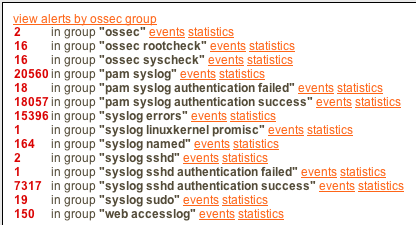Methods often differ depending on scale and location, for example perimeter logging for an enterprise is usually too much for an internal alert team to cope with, so this is usually outsourced to one of the managed service suppliers, who will then pass on relevant alerts.
For smaller organisations, or for specific host logging the problem is much more manageable, however you are still going to have to look at how you train and tune the alerting process. Splunk and others will do the job, but you need to plan for the amount of resource required to look after during the first few weeks, on any upgrade or change to the logged environment, on any change in attack profiles, and in fact continuously over time.
Having that out the way, the usual mechanisms are to use both signature based and statistical alerting - signatures are fast and can be updated by service providers so require low effort, however they need to be created so typically do not identify new types of attack, whereas statistical alerting responds to any change in logging - so you can end up overloaded with false positives until you tune.

